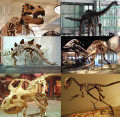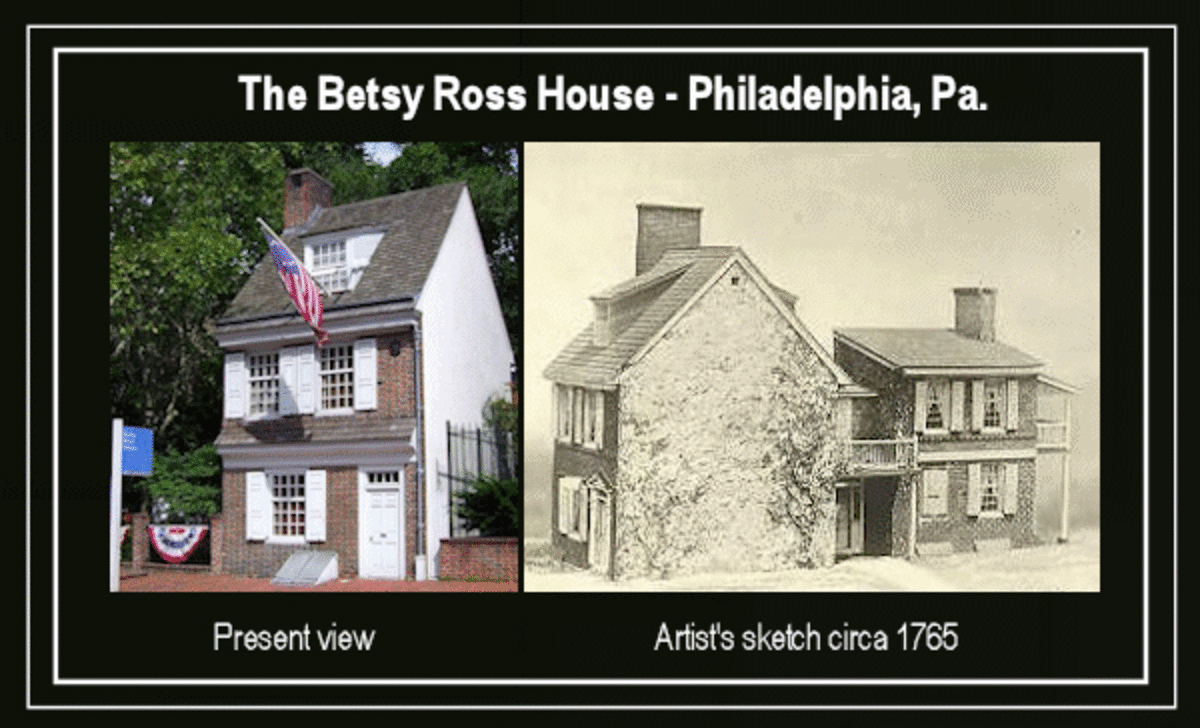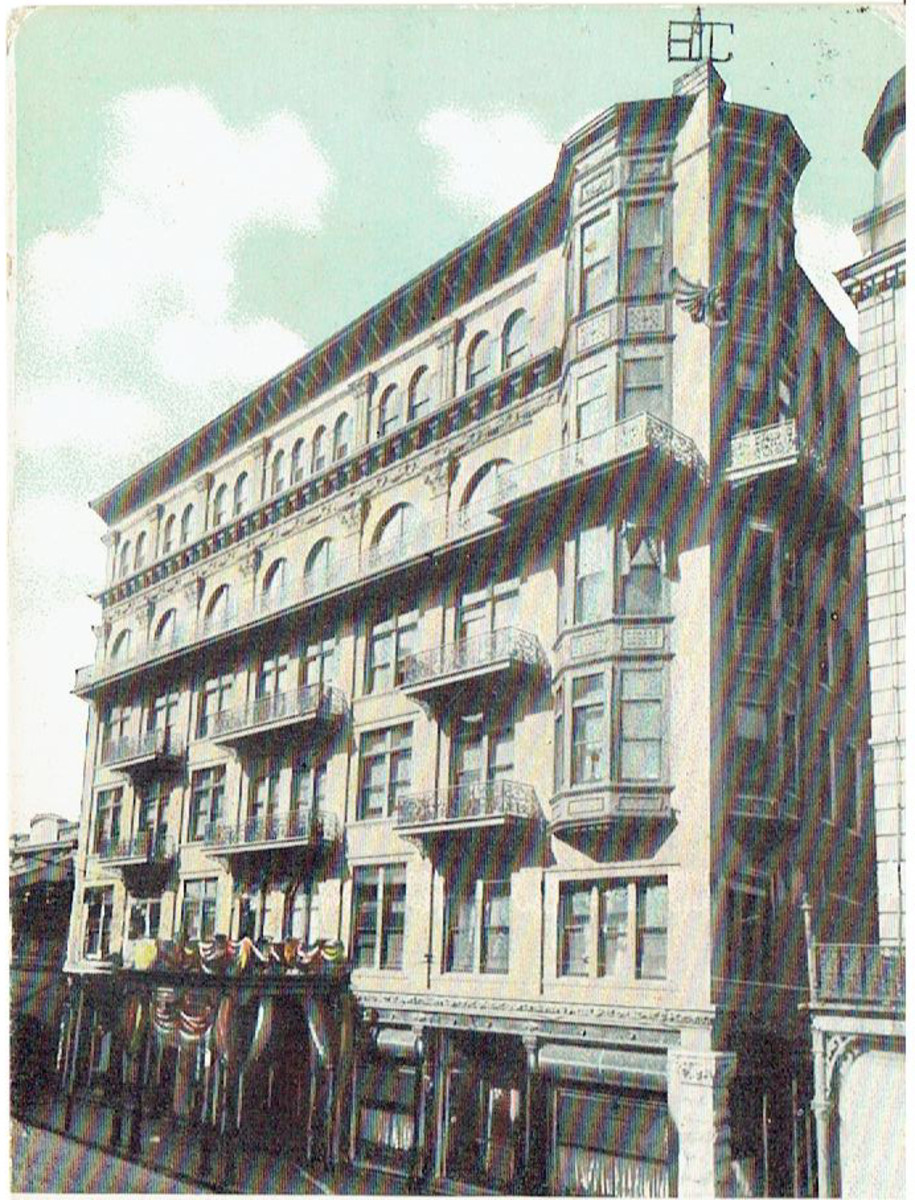- HubPages»
- Travel and Places»
- Visiting North America»
- United States
Hunting dinosaurs in Utah
I believe in dinosaurs.
I do.
But not the way I would believe if I saw one.
Some years ago, Utah! Travel Regions Association invited me to join them on a dinosaur hunt. Never having been to Utah, it sounded like a good plan.
My previous experience with dinosaurs had been pretty much limited to the Smithsonian, massive skeletons that are impressive in their own way, but it would be nice to flush them out a little.
That is not to say that I was expecting live dinosaurs. I am fully aware that they have not been seen in the wild for several years, but why not take a look.
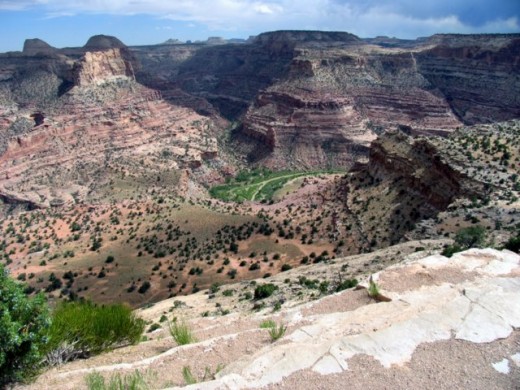
In truth, although I believe that they existed, it was difficult to really grasp the idea of those critters actually having lived millions of years ago. I don’t really even grasp the “millions of years” ago part. It’s like when I was a young boy and I tried to conceptualize what was beyond space or what comes after infinity. I still get a little dizzy trying to figure out how infinity works in time or space. I still have trouble with millions. Even two thousand years ago seems hard to believe; it all seems so…mythological.
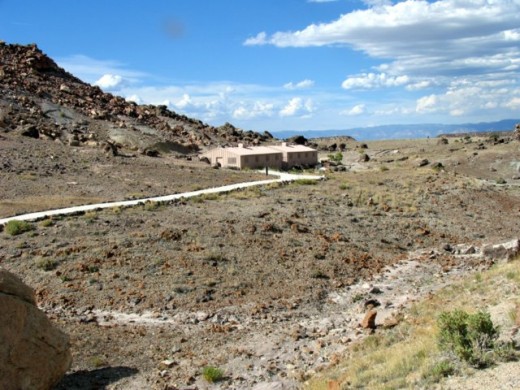
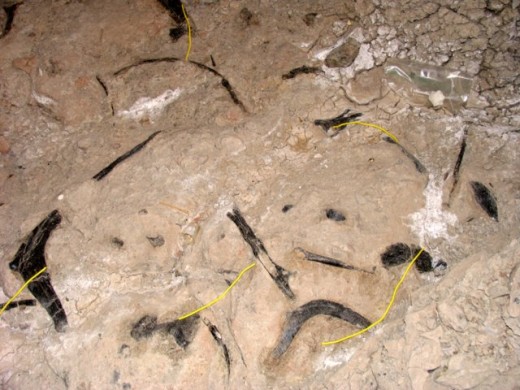
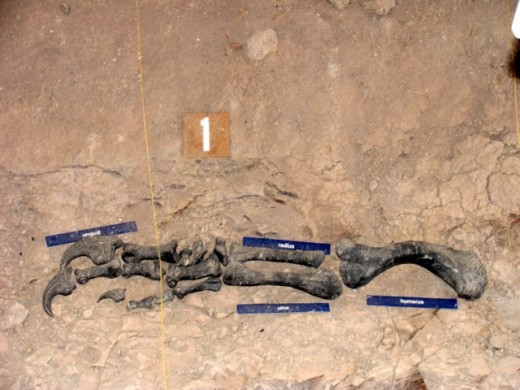
Cleveland-Lloyd Dinosaur Quarry
So I was off to Salt Lake City to run the big lizards to ground.
After a surprisingly enjoyable evening in what I had expected to be a dry and dour Salt Lake City (It was neither.) we headed for the San Rafael Swell in Emery County. The San Rafael Swell, in south-central Utah, is essentially a stone dome, about 40 miles wide and 75 miles long, surrounded by a variety of geological features, from buttes and mesas to canyons and cliffs.
After a teeth-rattling, kidney-shaking ride over washboard roads, we arrived at a pair of drab conjoined utilitarian buildings. Had it not been for the sign identifying them as the Cleveland-Lloyd Dinosaur Quarry, we might have passed them by thinking that they are storage sheds. But, here be monsters.
Inside the sheds I began to feel the reality of dinosaurs, both the big beastly carnivores and relatively namby-pamby (although often larger) herbivores. In an area the size of a building lot in my neighborhood, Cleveland-Lloyd, an isolated bare patch amid rugged terrain, has yielded up more than 12,000 dinosaur bones, a dinosaur egg and 30 complete (well, reassembled) dinosaurs.
The austere visitors’ center displays jawbones and gizzard stones (which helped in digestion), and a variety of other fossils. This modest site has produced more Allosaurus fossils than any other site in the world, but that raises more questions than it answers. The Allosaur, which looks to me like the larger, fiercer T-Rex, was the king of the Jurassic period, the largest carnivore of its time, with teeth sharper and pointier than Grandma’s wolf. The question is why so many are found in one small area. In fact, carnivore fossils at this site outnumber herbivores by an unnatural ratio of 3:1.
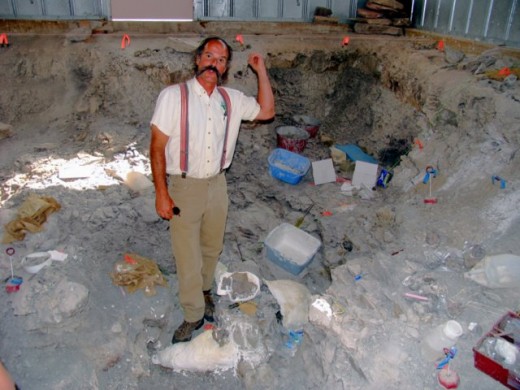
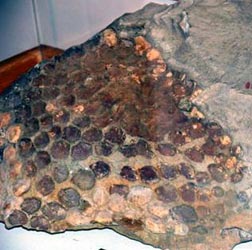
The excavation site is under cover of the conjoined sheds, about the size of a double-wide trailer. A scaffold that spans the length of the excavation, thick with fossils, allows visitors to look straight down at the site, revealing some in the process of being removed and others that are replicas placed where the actual fossils had been retrieved.
Our guide, geologist Mike Leschin, looked lovingly at the site: “It is impossible to dig [here] without finding dinosaur fossils” he said.
And he doesn’t exaggerate. The finds here represent nearly a dozen species and at least 70 different animals. Why so many? Why here?
I was fortunate in having the opportunity to descend into the dig to photograph Stegosaurus teeth in situ. What struck me more than anything was that I would never have recognized them as fossils, as being anything related to dinosaurs. My image of fossils is whole skeletons being discovered by archeologists with spoons and shaving brushes. These were scattered bits that looked like conglomerate rock.
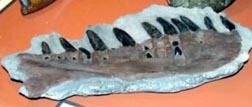
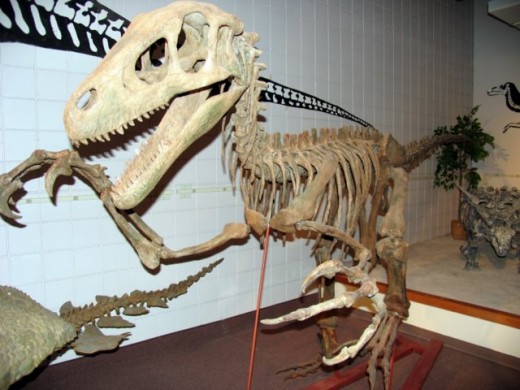
College of Eastern Utah Prehistoric Museum
Maybe I was ready to accept that this dinosaur business was not a Disney trick. Our next stop was the College of Eastern Utah (CEU) Prehistoric Museum in Price, Utah, where we saw the jawbone of an Allosaurus. Tooth buds were visible in the jawbone, ready to replace teeth as they were lost.
The CEU museum also displays a raptor skeleton, the Utah raptor, with the ripping claws that Spielberg’s raptors used to such effect in Jurassic Park, and fossilized stegosaurus skin that captured my attention for a long spell as I tried to imagine that it was what was left of the skin of a creature that lived millions of years ago.
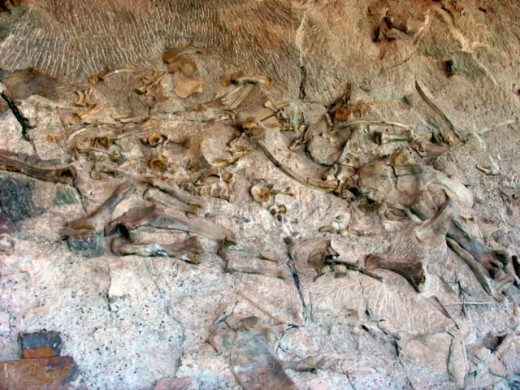
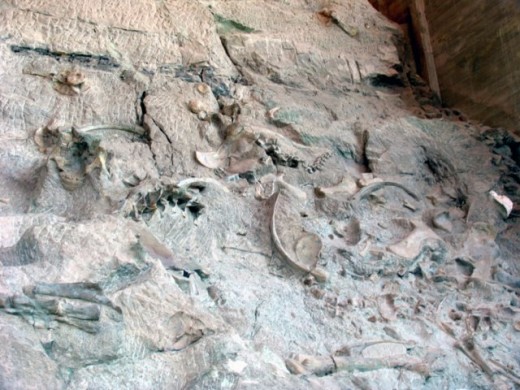
Dinosaur National Monument
The next morning, we headed north a little over 100 miles, to Dinosaur National Monument in Vernal, Utah. Dinosaur Monument’s main attraction is a rock face that has been stripped away revealing an impossibly rich display of fossils, a wall of more than 2,000 of them visible in the covered visitors’ center that was built over this section of the extensive fossil-rich Morrison Formation, which includes the Cleveland-Lloyd Quarry. In the 1940s, paleontologists cleared the bones enough for them to be easily distinguishable in place. Another 350 tons of fossils, including a nearly complete juvenile camarasaurus, have been removed from the site.
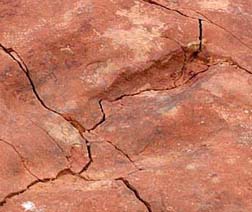
Red Fleet Reservoir
The thousands of fossils—especially the steg skin—provided pretty solid evidence that dinosaurs were real. But, for me, the clincher came when we stopped for a quick look at Red Fleet Reservoir where a park ranger showed us a rock shelf that stretched from the water at about a 40 degree angle. There, I was actually pretty excited to realize that the imprint that I first took for a large maple leaf impression was a foot-long footprint—of a carnivorous dinosaur. A few feet away and to the left was another. A few feet ahead and slightly to the right was another, as if we were tracking the little feller walking away from a refreshing drink. This was a dinosaur trail, a pattern for foot-prints from millions of years ago, and suddenly, I believed. It was real. Dinosaurs actually walked the earth and I could put my feet in their prints.
So after of years of believing that dinosaurs might live at the North Pole with St. Nicholas, it took only a few days in Utah to make me a believer, something even the mighty Smithsonian ad failed to do.

